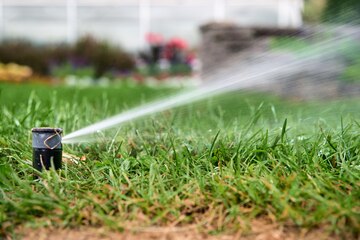Introduction To Irrigation
Definition
→The science which deals with the artificial supply of water to the crops for better growth according to crop requirement, season and crop types. Simply artificial supply of water to the crops is called irrigation.
During the supply of water to the crops, there are a lot of structures and cannels which are required like weir barrage, canal head regulator, canal fall, reservoir, dam. The science which deals with the construction of irrigation structure (weir, barrage, canal head regulator canal fall, reservoir, dam) for better supplying of water to the Crops known as irrigation engineering.
Necessity of irrigation
1. Non-uniform rainfall
→This area where there is non-uniform rainfall throughout the err year. for better growth of crop irrigation system is needed.
2. Less rainfall
→The area which receives very less amount of rainfall or no rainfall for agriculture those A place needs irrigation system.
3. Growth of perennial crops
→ For cultivation of perennial crops like sugarcane, coffee, cotton, coconut etc needs continuous water throughout the year. For cultivation such crops irrigation is needed.
4.Agriculture in bare land and deserted land
Advantage of irrigation.
- Proper growth of crops
- Improve yielding of crops
- Proper utilization of water
- Financial support
- Crops can be grown is bare land.
1. Increase in food production
→Irrigation helps in increasing crops yield to obtain self-sufficiency in food and self-sustain of country in food.
2. Optimum benefits
→Optimum utilization of water is made possible by irrigation Yield will be maximum for available agricultural land due to irrigation.
3. Generation of hydroelectric power
→Canal falls and canal head regulator can be utilized for generation of power correspond.
4.Domestic water supply
→ At many places irrigation canal can be used for small scale water supply system with
construction of treatment plant.
5. Facilities of communication
→ Roads can be easily provided alongside the canl for inspection, are utilize for general communication also.
6. Inland navigation
→ It is possible that some large irrigation canal may be develop for transportation and navigation purpose.
7. Afforestation
→ Trees are generally grown along the banks. of the channel which increase the timber wealth of the country.
8. Elimination of mixed cropping
→ In the area where irrigation is not available generally mixed cropping is adapted. If weather condition is not favourable to one of the crops the farmer cannot get optimum yield. If the irrigation is assured mixed cropping can be cultivated.
9.Cultivation of cash crop in mass area
10. Agriculture can be done throughout the year
Disadvantage of Irrigation
- Irrigation may result in colder and damper climate condition resulting marshy land and breeding of mosquito causing disease like malaria and dengue.
- Over irrigation may lead to water logging and may reduce field.
- Irrigation project are complex and expensive. It requires regular supervision and maintenance.
- Loss of valuable land by submerging due to construction of reservoir, dam, weir barrage
- Soil erosion
Sources of irrigation
→ Surface of irrigation includes surface water Sources ground water sources and grey water
1. Surface sources of water for irrigation includes river, stream and lake by the construction of dam and weir.
2. Ground water sources includes wells, deep boring and supply is done by mechanical pumping process.
3 Grey water is domestic wastewater other than human excreta which contain sink drainage bathroom sewage that contain acceptable minerals for crops
Cross Command Area (GCA)
→ It is the area bounded within the irrigation boundary of the project which can be economically irrigated without considering the limitation of the quantity of available water. It includes the cultivable land as well as uncultivable. For example, pounds, residential area, bare land and cultivable land.
Cultivable Command area (CA)
→ It is the part of gross command area exuding the area of cultivable land, residential area. roads, ponds, forest etc are excluded. In the absence of detailed data, (CCA) may be assured eighty percentage. (80%) of (GCA).
Net command area (NCA)
→ It is a part of cultivable command area which exclude the area of canal network, supply ditches bond construction in the field. It is the net cultivable area which have high production
